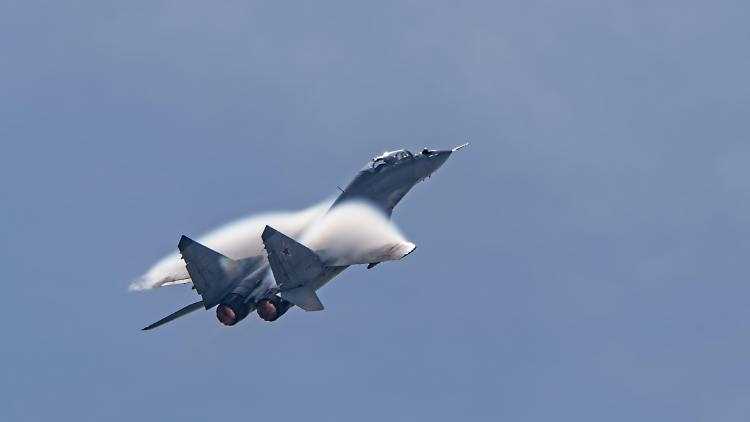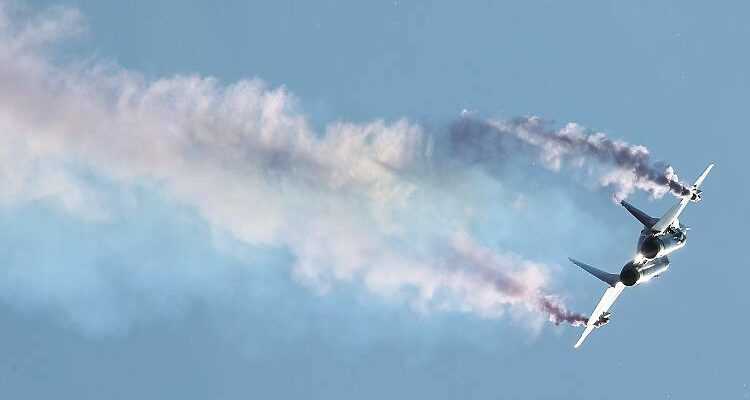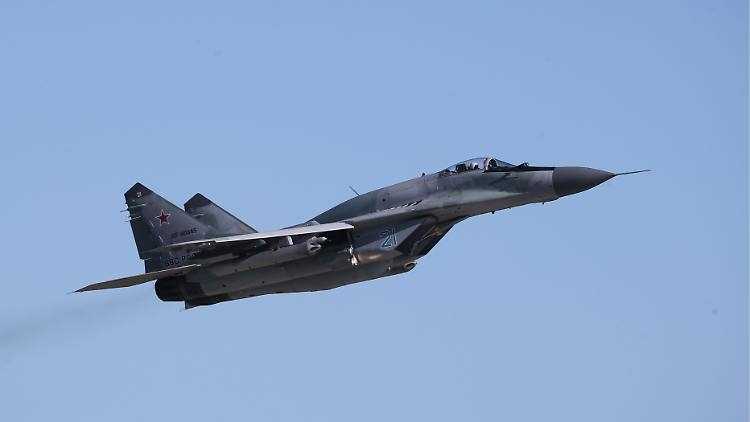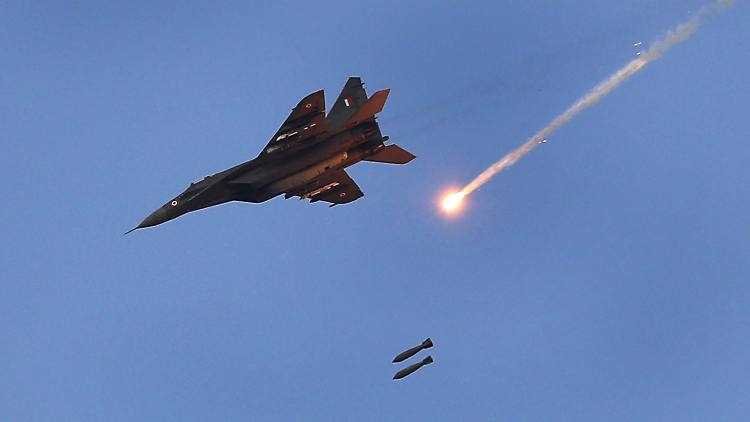Agile, powerful and expensive
MiG-29 – a flying myth
By Holger Preiss
03/09/2022 2:53 p.m
Whether the Polish MiG-29 fighter jets will be delivered to the Ukrainian army remains to be seen. It would definitely be a politically daring manoeuvre. But what about the MiG-29? Is she really as good as her legendary reputation suggests? And where do the jets actually come from?
Discussion whether MiG-29 fighter jets will be delivered from Poland to Ukraine is still ongoing. After all, offensive weapons from a NATO member would be shipped to a country at war with Russia, who would see this as direct interference in the war. A circumstance that could easily lead to the war spreading to NATO territory. Concerns, which, by the way, were also voiced by Federal Foreign Minister Annalena Baerbock.
Kyiv itself asked for the fighter jets because the pilots of the Ukrainian Air Force are trained on the MiG-29. The explanation for this is simple: the machines are more than 40 years old, come from the stocks of the GDR air force and are a legacy from the time when the GDR was still part of the Warsaw Pact and Ukraine belonged to the Soviet Union. Precisely in those days when all member states were provided with Soviet military technology. Incidentally, the reason for this was that, in the event of a military conflict, it was assumed that each Warsaw Pact army could use its partner’s weapons. On the one hand, because you are familiar with it, on the other hand, to obtain spare parts.
From the stocks of the NVA to the Bundeswehr
With the reunification in October 1990, all 24 MiG-29s of the GDR air force went to the Bundeswehr. Three years later, the machines were then integrated into the newly formed Fighter Squadron 73. Initially, all MiGs remained in Brandenburg until they were transferred to the Rostock-Laage military airfield in 1994. Until 2003, Jagdgeschwader 73 was the only NATO squadron in Europe to combine two weapon systems under one roof. In addition to the MiG-29, 15 F-4 Phantom fighter-bombers also flew here, which by the way were even older than the Russian MiG.
The Mikoyan-Gurevich MiG-29 had its maiden flight on October 6, 1977. It was put into service on June 1983. What distinguishes it to this day is its enormous agility, the powerful engines and the excellent aerodynamics. Another advantage of the MiG-29 is that it only needs 250 meters for takeoff and can withstand a load of up to nine G – nine times the acceleration due to gravity (9.81 m/s2). The maximum speed at high altitude is Mach 2.4, which is more than twice the speed of sound. At ground level it is still Mach 1.1.
“Don’t fly in a real war”
The idea of the MiG-29 was and is the so-called close air support. Combat aircraft are sent to directly support the ground forces. This type of warfare dates back to the First World War. This is where planes were first used to drop smaller 25-pound bombs on enemy troops. A scenario that is no longer up to date in modern warfare, but could still work well given the mixed situation in the war in Ukraine.
The problem with the MiG-29, however, is that it can hardly stay in the air for more than 45 minutes due to its high fuel requirements. The maximum combat range is 700 kilometers; if an additional tank is on board, it is 1300. The ultra-fast fighter jet cannot be refueled in the air either, which forces it to repeatedly land on the ground and makes it so vulnerable to counterattacks. The pilots also complained about the MiG navigation and radar. As early as 2000, Major Georg Pepperl, who flew the jet for many years in Fighter Wing 73, told the newspaper “Welt”: “I don’t want to go to a real war with this aircraft.”
The legendary cobra maneuver
Nevertheless, Pepperl had to admit at the time that “the MiG-29 opened up completely new perspectives for a fighter pilot” who had been retrained from an F-4 at the time. Whether it was the legendary cobra maneuver used by fighter pilots in air combat and which could be flown extremely well with a MiG-29 that prompted Pepperl to make this statement is not documented. The fact is, however, that Viktor Pugachev is said to have demonstrated it in public for the first time in a Su-27 in the mid-1980s.

The cobra manoeuvre, which can probably also be flown very well with the MiG-29, is legendary.
(Photo: dpa)
The cobra maneuver consists of the pilot suddenly slowing down in dogfights in order to force the pursuing opponent to overtake, and putting himself in a good firing position. Incidentally, the sudden deceleration is caused by a sudden increase in the air resistance of the aircraft, as the jet is positioned vertically upwards.
In the Bundeswehr, the MiGs were primarily used as training partners. NATO squadrons regularly flew their jets against the MiGs in Rostock-Laage. Increasingly, however, the procurement of spare parts for the MiG-29 became a problem. Even during deployment in the German Armed Forces, you had to reckon with four times the cost of every flight hour compared to an F-4 Phantom. This may also have been a reason why the Bundeswehr and the federal government decided in 2003 to hand over 22 MiGs to Poland. Why only 22 machines? One was destroyed in a crash in 1996 and the other found a place in the “Air Force Museum” in Berlin-Gatow.


